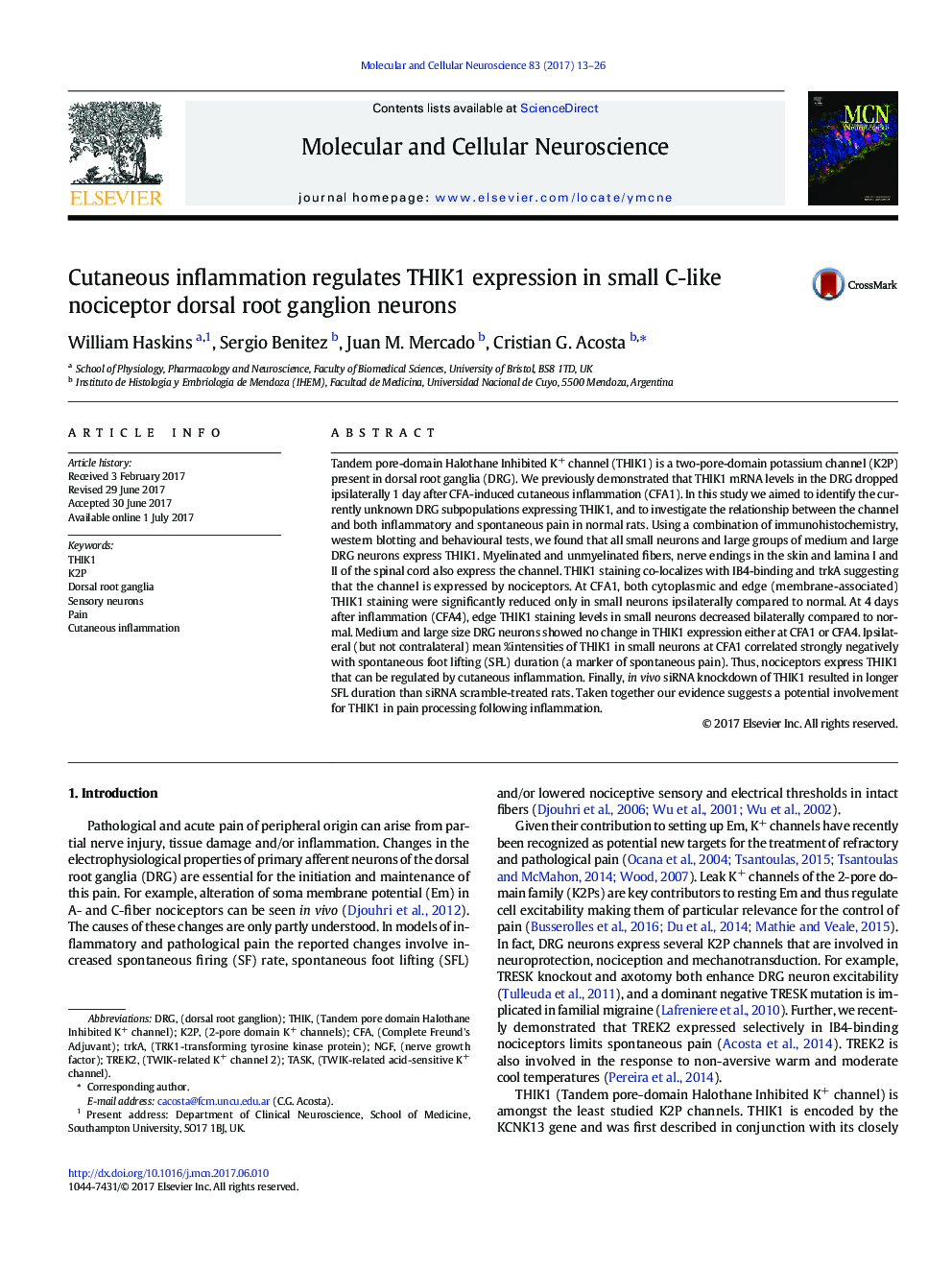| Article ID | Journal | Published Year | Pages | File Type |
|---|---|---|---|---|
| 5534400 | Molecular and Cellular Neuroscience | 2017 | 14 Pages |
•DRG neurons of all sizes express THIK1 with the strongest staining in small putative C-neurons•THIK1 co-localizes strongly with trkA and substance P-positive neurons and weakly with IB4-binding neurons•Cutaneous inflammation downregulates THIK1 expression in only small DRG neurons•Spontaneous foot lifting significantly negatively correlates with THIK1 expression and increases with THIK1 siRNA knockdown
Tandem pore-domain Halothane Inhibited K+ channel (THIK1) is a two-pore-domain potassium channel (K2P) present in dorsal root ganglia (DRG). We previously demonstrated that THIK1 mRNA levels in the DRG dropped ipsilaterally 1 day after CFA-induced cutaneous inflammation (CFA1). In this study we aimed to identify the currently unknown DRG subpopulations expressing THIK1, and to investigate the relationship between the channel and both inflammatory and spontaneous pain in normal rats. Using a combination of immunohistochemistry, western blotting and behavioural tests, we found that all small neurons and large groups of medium and large DRG neurons express THIK1. Myelinated and unmyelinated fibers, nerve endings in the skin and lamina I and II of the spinal cord also express the channel. THIK1 staining co-localizes with IB4-binding and trkA suggesting that the channel is expressed by nociceptors. At CFA1, both cytoplasmic and edge (membrane-associated) THIK1 staining were significantly reduced only in small neurons ipsilaterally compared to normal. At 4 days after inflammation (CFA4), edge THIK1 staining levels in small neurons decreased bilaterally compared to normal. Medium and large size DRG neurons showed no change in THIK1 expression either at CFA1 or CFA4. Ipsilateral (but not contralateral) mean %intensities of THIK1 in small neurons at CFA1 correlated strongly negatively with spontaneous foot lifting (SFL) duration (a marker of spontaneous pain). Thus, nociceptors express THIK1 that can be regulated by cutaneous inflammation. Finally, in vivo siRNA knockdown of THIK1 resulted in longer SFL duration than siRNA scramble-treated rats. Taken together our evidence suggests a potential involvement for THIK1 in pain processing following inflammation.
